#Viburnum dentatum
Text

Viburnum dentatum 'Chicago Lustre' / 'Chicago Lustre' Southern Arrowwood at the Sarah P. Duke Gardens at Duke University in Durham, NC
#Viburnum dentatum 'Chicago Lustre'#Viburnum dentatum#Viburnum#Caprifoliaceae#Chicago Lustre southern Arrowwood#Southern Arrowwood#Arrowwood#Arrowwood viburnum#Roughish Arrowwood#Native plants#Native flowers#Native shrubs#Plants#Flowers#Shrubs#Nature photography#Photography#photographers on tumblr#Sarah P. Duke Gardens#Duke Gardens#Duke University#Durham#Durham NC#North Carolina#🌺🌻
11 notes
·
View notes
Photo

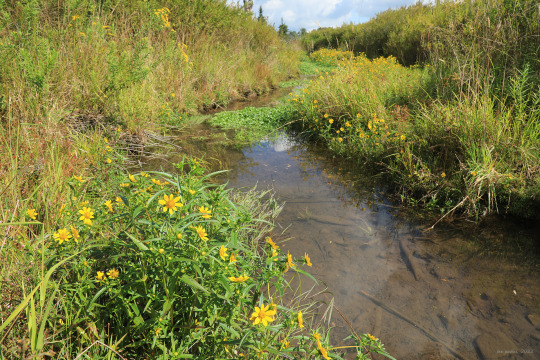

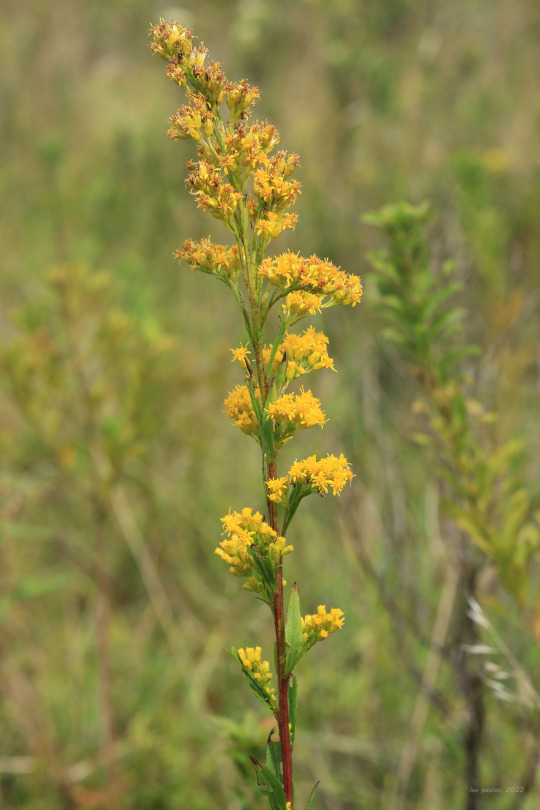


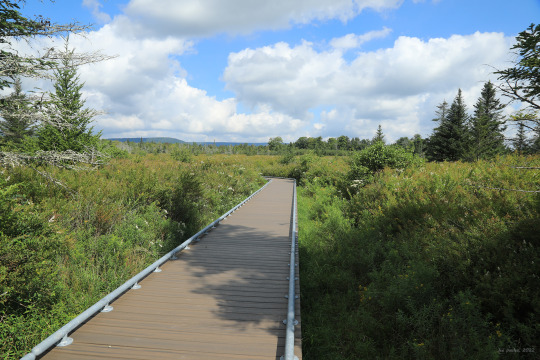

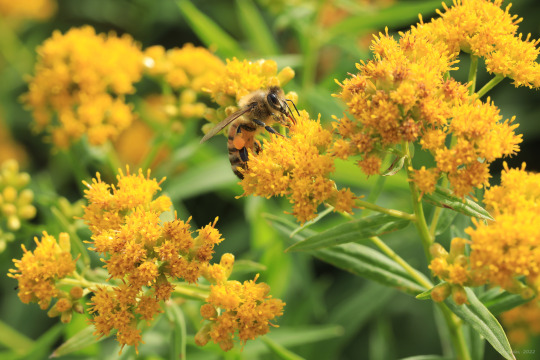

Canaan Valley National Wildlife Refuge, Part 3. Canaan Valley is the highest mountain valley of its size east of the Mississippi River and hosts the largest wetlands complex in the Central and Southern Appalachians. Most of these wetlands are now protected by Canaan Valley State Resort Park and Canaan Valley National Wildlife Refuge. The Freeland Boardwalk Trail in the refuge is an ideal place to get an up-close experience with one of the wetland types - a balsam fir swamp. A half-mile long, raised boardwalk with wildlife viewing platforms winds through the swamp, allowing visitors to interact with the wildlife and plants without damaging the fragile ecosystem.
From top: Bur marigold (Bidens laevis), also known as smooth beggartick, a wetlands-loving beauty that produces a profusion of golden flowerheads; bog goldenrod (Solidago uliginosa), another wetlands native with a bright red stem and closely-packed flowers on a plume-like inflorescence; the bright blue berries of arrowwood viburnum (Viburnum dentatum); the ripening berries of American black elderberry (Sambucus canadensis), also known as American black elder; white meadowsweet (Spiraea alba), a native spirea of Appalachia’s wetlands that draws hordes of pollinators with its beautiful spikes of white flowers; grass-leaved goldenrod (Euthamia graminifolia), also known as flat-top goldentop, not a true Solidago, but even more beautiful with its flat panicles of golden-yellow flowers and graceful foliage; and an industrious bumblebee prying open the closed petals of a narrowleaf gentian (Gentiana linearis) to get at the nectar pot below.
#appalachia#vandalia#west virginia#canaan valley#canaan valley national wildlife refuge#wetlands#balsam fir swamp#canaan fir#balsam fir#freeland boardwalk trail#bidens laevis#bur marigold#smooth beggartick#solidago uliginosa#bog goldenrod#viburnum dentatum#arrowwood viburnum#sambucus canadensis#american black elderberry#american black elder#spiraea alba#white meadowsweet#euthamia graminifolia#grass-leaved goldenrod#flat-top goldentop#gentiana linearis#narrowleaf gentian#narrow-leaved gentian#bumblebee#bombus
50 notes
·
View notes
Text
How to Grow and Care for Arrowwood Viburnum?
Arrowwood viburnum is a versatile and low-maintenance edging plant that grows in a variety of temperatures and soil conditions. Arrowwood viburnum can be planted in sun or shade, making it a great option for nearly any garden. Arrowwood viburnum is also relatively drought tolerant, so it's perfect for those hot summer days. To learn more about how to grow arrowwood viburnum in your own garden, read on. Arrowwood viburnum is a deciduous shrub that can grow up to 10 feet tall and wide. Arrowwood viburnum has dark green leaves that turn red in the fall, and small white flowers that bloom in the spring. Arrowwood viburnum is a great choice for gardeners looking for an easy-to-grow shrub that provides year-round interest. Arrowwood viburnum is also deer resistant, making it a good choice for gardens that are frequented by deer. If you're looking for a versatile and low-maintenance plant, arrowwood viburnum is the perfect choice for you.

0 notes
Video
n174_w1150 by Biodiversity Heritage Library
Via Flickr:
Österreichs allgemeine baumzucht, :. Wien :Ignaz Albertischen Buchdruck.,1792-1822.. biodiversitylibrary.org/page/42927545
#Austria#Shrubs#Trees#Harvard University Botany Libraries#bhl:page=42927545#dc:identifier=http://biodiversitylibrary.org/page/42927545#taxonomy:binomial=Viburnum dentatum#flickr#flower#flowers#plant#plants#wildflower#wild flower#wildflowers#wild flowers#botany#botanical#botanical drawings#botanical drawing#scientific drawing#scientific illustration#Botanical illustration#viburnum
0 notes
Photo
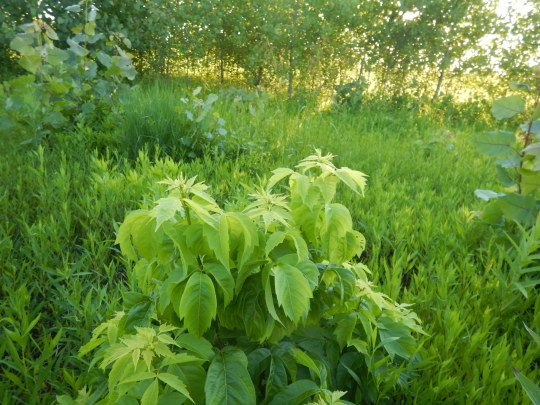
Viburnum dentatum
Arrow wood vibernum, growing in a fen in Clark co. Ohio where Clark and Green meet just north of Yellow Springs.
A fantastic thicket forming species that blooms in the rare May- June transitional period. I dont understand why we dont see it more in landscaping, I mean look at those apical leaves where the new growth appears almost white.
15 notes
·
View notes
Photo

Arrowwood, Viburnum dentatum (by me)
#Arrowwood#Viburnum dentatum#Viburnum#Adoxaceae#Dipsacales#flowers#plants#shrub#spring#Great Swamp NWR#Great Swamp National Wildlife Refuge#Morris County#New Jersey#mine
15 notes
·
View notes
Text
Wednesday 11 September 1839
3 ¼
11
F61 ½° at 4 ¼ am much rain in the night and sandy road .:. 6 horse off at 5 6/.. at Kyrkstad at 6 55/.. I hot and much bit in the night
K- to Bolstad 14 w.
Njölbolstad 13 w.
Helsingfors 68 w.
St. P- 480 w.
the woman had not been able to get us any Swedish money .:. agreed that she should take a 10 Rubel bill and be answerable for 6r. for the horses and take 4 towards her own bill and I paid her (at the rate 40sk. rigs per rubel) for the 2 remaining rubels
7 eight sk. banco notes i.e. 1.5.4+0.2.8 given over – very civil good tempered looking woman – much pleased we were so satisfied – remembered Handbook and his friend very well – said they had given her a small bit of money which she kept for their sake – I happening to have my 3 silver ½ dollar banco silver pieces in my pocket gave her one of them (that has a hole thro’ it) and desired her to keep it for I should ask to see it again sometime – Better rooms and house at Keala [Kealanoja] last night but better eating here – Rain again and off in the rain at 5 6/.. – I slept most of the way – all forest till 6 55/.. when fine and sunny, and stopt to change horses /4 again) at some distance from the station house (did not even see it) near a small cottage where the red square headed mile post is set up – I got out for a few minutes very usefully the village must be near the station house on our left – scattered farms and cottages about – a pretty opening – very pretty country – wide winding wooded hill enclosed valley – a bit of forest again (young wood) in about hour+ - but good road – sandy land – but the road hard gravel like an English park road about 12ft. wide as usual, but sometimes less nice country all along to Bolstad at 8 ½ - stopt again in the road so[me] distance (left) 200 or 300 yards from the station house – walked to it – to see the direction post – could not find one – poor place – I think we could not well sleep there – the people 2 or 3 men and a woman
SH:7/ML/TR/13/0030
September Wednesday 11 at breakfast a little fish (apparently salted?) and boiled potatoes 2 rigs dollars a ton dearer here than at Stockholm – at last it was agreed that the woman should pay for our 4 horses from here 15 ½ w. to Everby [Ofverby] = 3.72 and the young man (her son?) gave me two 20kop. notes + one 75 kop. + two two-kop. copy pieces + two ½ sk. banco pieces for 4kop. = 5 Rubel – 5 kop. no wonder Handbook complained of their accommodation for the night – that is not the place to stop at – all Finnish commerce with Stockholm .:. all their money payments among themselves are in Swedish money but they are obliged to pay the taxe for posting in Russian money .:. are obliged to receive it for their horses – their wood (salmon) butter all goes to Stockholm but now they have the douane to pay = 2 rigs dollars per 60lbs. and being obliged to sell their butter at the Swedish price as they did before without duty they of course now lose this – and so equally the whole of the duties paid by them to Sweden is now a loss to them – the village of Bolstad not apparently very near the station – nice country – off from B- at 9 2/.. and at 9 ½ pretty lake and unpainted cottages and hamlets dotted here and there – green basin valley and lake and rounded wooded hills – in about 10 minutes more or ¼ hour come down upon the water wood bridge and cross it at one end where it looks river like – very pretty hereabouts rock and wood and water and villages and farms or cottages – a good deal of wind which curly the water – corn cocks as yesterday but now 9 ¾ it is rye – steep pitch up from the bridge and sandy road – at 10 ¼ moss-rocky forest – uphill and our horses hardish passed – all along sandy – pretty country – very pretty drive – at 10 50/.. at next stage to Finns 12 ½ w.
Helsingfors 39 and St. P- 451 w.
Öfverby (pronounced Everby) – small unpainted house – but probably might sleep tho’ not good - but the woman a decent woman – off at 11 – cocks of corn out here – rye I think – very pretty – rocky wooded hills and scattered unpainted little cottages and so red – the village of Ofverby (its neat little church at the foot of the hill just beyond the station) seems
September Wednesday 11 seems widely scattered in patches – winding pretty valley – round hilly and rather sandy – in ¼ hour (11 ¼) foresty again – several of the bare rocks today very white – all granite
the Fins a stupid looking people – here and there a red house but the red seems to bespeak a certain degree of [afflict] – the being better off than common – and here as in N. and S- the [?] (contamine) is growing as a weed among the rocks – we have not seen it as weed elsewhere because the land kept too clean – no weeds seen – now at 11 50/.. another wooded pretty lake right – and A- and I have just had a little of our Keala [Kealanoja] coq du bois that we brought away in paper – very good – many hamlets scattered about today – the country today seems more populous than yesterday? – at Finns at 12 13/..
to Grahn 14 ½ w.
Helsingfors 26 ½ w.
St. P- 438 ½ w.
might sleep but not perhaps good place for it tho’ the civil woman came to say she could change a 5 Rubel note
nice open country about here wooded in the distance – 2 or 3 cottages near the station house – and large village or two of unpainted houses little distance (left) – rather pitchy last stage and at = off at 12 34/.. from Finns out with a steepitsh pitch from here and then pass thro’ a few houses and over 3 [?] bridges the unpainted cottages very picturesque dotted all round about interspersed with patches of fir wood and wooded hill and well cultivated vale – now at 12 ¾ a little sun forest light – little pretty vale just below us right green rye and corn in cock (probably rye) not much oats grown in Finland? cottages or barns dotted up and down – fine foresty peopled drive this stage at 1 ¼ unpainted village in the widish basin vale little distance left of road and good yellow house and one or 2 red houses near – all looks well hereabouts – and slow at 1 20/.. descending and at the bottom of hill another pretty little lake near (left) – the openings and rounded dark pine wooded hills very picturesque – much mammelonné [mamelonné] rocky hill and bare and moss covered rock and boulder in our forest and sandy road now at 1 1/2 – here and everywhere much more Scotch fir than Spruce – this forest now at 1 ¾ the best as to size of trees (but none large) we have passed thro’ -
SH:7/ML/TR/13/0031
September Wednesday 11 in Finland – it opens out and we stop at Grahn at 1 57/.. nice little single house on a little [eminence], looking dry and comfortable – I should suppose one might sleep there as well as at Nyby or better? – the wide valley on plain studded with houses, farms, barns – the proportion of red increasing as if to denote our approach to the capital Helsingfors 12w. distance – large [?] beautiful lengthy finely wooded wooded island lake right sweeping along the wide valley – road hilly but tho’ rather sandy, good – forest covered rock alongside (left) – have written, or rubbed out pencilling, or read Handbook (article St. Petersburg) all this morning except added up the whole but 1 or 2 pp. of the Swedish account – since leaving Götheborg [Gothenburg] It seems (vide p. 174. 2nd vol.) that our pastor on board the steamer was M. Edouard de Moralt minster of the reformed church at St. P- and ‘the learned editor of an edition of Minuties’ Felix’ – probably Handbook knows him and sent him his book en cadeau? now at 2 20/.. road very sandy in the forest – at 2 40/.. gentleman’s house right – very pretty – a company of soldiers pass us – forest and break – very pretty – at 2 ¾ pass (close) broad shallow lake – at 2 55/.. Helsingfors church in sight – whitewashed like several other large neighbour buildings – church a fine object – fine looking town with its beautiful fjord – forest and break till now 2 55/.. that we emerge to bare Götheborg-like [Gothenburg] scantly wooded rocky hill – and gardens and houses marking our approach to the capital – at 3 at the water – beautiful view – cross good wood bridge – and at 3 ¼ at the Hotel du Nord – the fine dressed woman who came to us could do nothing – must wait for mademoiselle how should we stay – there was a room au 3me – I got tired of this work and drove off to the society’s house fronting the harbour – settled
September Wednesday 11 there very comfortably at 3 ½ - 2 nice rooms and lodging for the servants at 6 rubels a day – au 3me? but good – ordered dinner at 6 ½ and A- and I out at 4 10/.. – took John – to the botanic garden –
Stymphoricarpus [symphoricarpos] racemosus (snowberry bush) in flower
Vïburnum [Viburnum] Lentago a little like prunus padus but with broader leaf
V- dentatum (leaf something between the hazel and syringa leaf?)
Lonicera caprifolia [caprifolium] (as called by the gardener) the shrub I observed at Åbo with a little orange coloured berry, looking a [specie] of honeysuckle
Populus canescens (white abele)
P. cardifolia
Delphinium. several specie large beautiful blue flower – a little in the style of aconite – have often seen it in a pot in the window in these northern parts
Lythrum, several specie pretty pink flower in spikes 6 or 8 inch long – narrow leaf – would be pretty (to give colour) at Shibden and hardy enough -
Asclepias incarata [incarnata] (in flower – pinkish – pretty would do at Shibden)
Phlox several specie pretty little genus-pink and white – in flower like a smooth sweet William – 6 petal flower – the white very common in England gardens
Borago officinalis – pretty blue flower – 5 petals woolly stern and leaves – whatever will do well out of doors here, would do at Shibden – much wind today must be very cold, and exposed in winter – the garden garden divided into small compartments for the flowers, and sheltered by hedges the tall ones of lilac, and acacia, and Norway maple and the low ones of Spiraea calcifolia [salicifolia] – try this hedging plan at Shibden with along the middle a hedge of Spruce firs – or Sycamores? a very pretty hardy looking mespilus? or [?]? with clusters of hawthorn-like (but larger) red haws – Inquire for this –
In returning about 5 ¾ set John at liberty and A- and I sauntered into and about the handsome new not finished church – a Greek cross with 4 Corinthian porticos and pediments – then stood some while listening to the military band and came in at 6 ½ - dinner at 6 ¾ soup, mutton cutlets, sort of
SH:7/ML/TR/13/0032
September Wednesday 11
sweet omlet, and afterwards a sort of roll pancaky thing for dessert – no mead now – too late in the season – had plenty in the summer - .:. had each 2 cups of coffee – then siding had Grotza – then wrote the last page till now 10pm. very fine day – a good deal of wind all day but this afternoon particularly, and particularly here – a very handsome town – fine day F61 ½° now at 10 ½ pm
7 notes
·
View notes
Photo

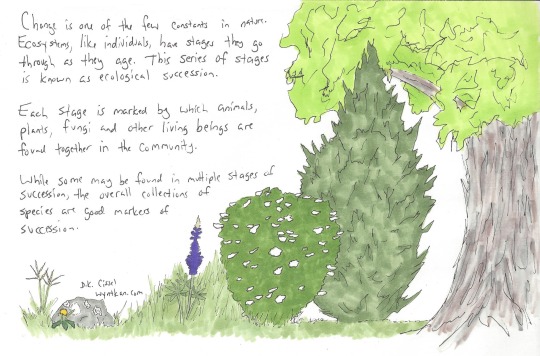
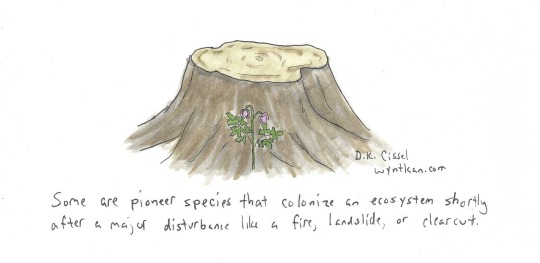
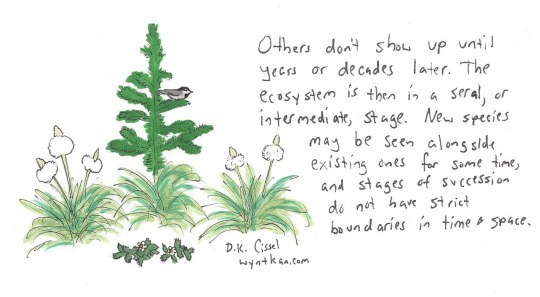



For a lot of people, a bunch of trees in a place counts as a “forest”. Yet those of us who have a more ecological eye can take a look at those trees and figure out whether they’re an established forest, or whether they’re in a younger stage of succession, just by looking at the age of the trees and the various species of living being represented. Other ecosystems may be a bit more challenging to assess, but they have their own chains of succession as well. And as I explained in my comic on old growth forests, not all species can live in a younger, recovering ecosystem. So consider this comic a very basic introduction to the idea that there’s more to a given habitat than what immediately meets the eye!
Also, I had a lot of fun drawing new ecosystems I’ve never tried before! I’m especially proud of my portrait of Loowit (Mt. St. Helens.)
Species portrayed: Plains zebra (Equus quagga), yellow-billed oxpecker (Buphagus africanus), acacia tree (Acacia sp.) big bluestem grass (Andropogon gerardii), common dandelion (Taraxacum officinale), greenshield lichen (Flavoparmelia caperata), wild lupine (Lupinus perennis), arrowwood viburnum (Viburnum dentatum), eastern red cedar (Juniperus virginiana), shagbark hickory (Carya ovata), Pacific bleeding heart (Dicentra formosa), mountain chickadee (Poecile gambeli), noble fir (Abies procera), beargrass (Xerophyllum tenax), wild strawberry (Fragaria virginiana), saguaro cactus (Carnegiea gigantea), prickly pear cactus (Opuntia ficus-indica), mesquite (Prosopis sp.), paloverde (Parkinsonia sp.), paintbrush (Castilleja sp.), northern pocket gopher (Thomomys talpoides), northern red snapper (Lutjanus campechanus), green brittle star (Ophiarachna incrassata), assorted corals
Transcript under cut.
Title: What is Ecological Succession?
[First panel: a scene with a plains zebra with two oxpecker birds on its back, and an acacia tree in the background. The exact same scene is replicated four times with the years 5000 B.C., 1000 B.C., 1800 A.D. and 2020 A.D. under each.]
It’s common to think that ecosystems don’t change, and that what you see today is what’s always been. Yet that isn’t the case.
[Second panel: a forest at different points of succession, with grasses and small herbaceous plants on the left, larger shrubs and small trees in the middle, and a large hickory tree on the right]
Change is one of the few constants in nature. Ecosystems, like individuals, have stages they go through as they age. This series of stages is known as ecological succession. Each stage is marked by which animals, plants, fungi and other living beings are found together in the community. While some may be found in multiple stages of succession, the overall collections of species are good markers of succession.
[Third panel: A Pacific bleeding heart flower grows in front of an old tree stump.]
Some are pioneer species that colonize an ecosystem shortly after a major disturbance like a fire, landslide, or clearcut.
[Fourth panel: A small noble fir tree has a chickadee in its branches, while beargrass and wild strawberries grow nearby]
Others don’t show up until years or decades later. The ecosystem is then in a seral, or intermediate, stage. New species may be seen alongside existing ones for some time, and stages of succession do not have strict boundaries in time and space.
[Fifth panel: a desert scene shows saguaro cactus and prickly pear cactus in the foreground with mesquite and paloverde shrubs behind them, and a ridge in the background]
It may be centuries before the ecosystem reaches its climax stage. At this point, the variety of species living there becomes more or less stable. The living beings also maintain good balance with their physical habitat, including the hydrological cycle (what happens to water in the ecosystem) and the nutrient cycle (how nutrients pass from one being to another.) It remains stable until another disturbance occurs.
[Sixth panel: the foreground shows a northern pocket gopher on a rock next to some paintbrush flowers and grass; behind the hills in the background, Mt. St. Helens shows its giant post-eruption crater]
There are two main types of succession. Most of what I’ve covered so far is secondary succession, when an existing ecosystem is damaged. Primary succession is when a totally new ecosystem is formed, such as when sand dunes expand to new territory, or when volcanic lava cools to create new land. Both types can happen in the same place. For example, the 1980 eruption of Mt. St. Helens in Washington completely wiped out ecosystems directly around the volcano, as did mudflows in some areas further out. All life was destroyed in these places. Yet many other areas, while badly daamged by ash, pyroclastic events, and mudflow, still saw some living beings survive to repopulate. Mt. St. Helens Volcanic Monument protects this patchwork of primary and secondary succession examples, and scientists gather valuable data on both here.
[Seventh panel: a red snapper fish and a green brittle starfish live in a vibrant coral reef with many types of coral]
All ecosystems have succession. More fragile ones like deserts, wetlands and coral reefs, may take longer to recover from disturbances. This is why it is so important that we carefully consider the impact of our actions before we do something that damages or destroys an ecosystem. The wrong choice may mean it will be many lifetimes before the place we’ve harmed recovers entirely--if ever.
73 notes
·
View notes
Text


Took down a wall of japanese privet today😌
But my neighbors were more like 😬😬😬
We talked to her on Sunday about our plans to not put a fence back up because... ugly... and all of the trash we found when we took down the fence. Who knew that a 1 ft wide gap would collect so much trash? She said "it was beautiful from our side!"
We still have to cut off the rest of a rusted fence (that the shrubs grew through) and pull stumps.
I gave her the information for a nearby nursery and she is going to pick out what she wants and we will plant them for her. I told her I would choose some shrubs for her if she couldn't decide. I hope this was a good idea lol.
We are picking up some shrubs on Friday and wil have a digging and planting party this weekend
I would LOVE to chop the rest of the privet hedge, but it is literally holding up the retaining wall that prevents the alley from landsliding into the yard. So unless i can scrape together a small fortune to re-engineer a retaining wall, the privet will have to stay.
ALSO, no, i refuse to ask the native plant group about what i should plant as an evergreen screen. They will just say "red cedar lol" but i don't want those! Nor do i want ilex opaca! I am getting a small magnolia cultivar, a small arborvitae cultivar, and northern bayberry. Also planting itea 'merlot' and viburnum dentatum 'blue muffin' for berries, and a couple aromatic asters for good measure. You might could convince me to get a holly but not anytime soon!
1 note
·
View note
Text
Wednesday 11 September 1839
[Bugs bite Anne during the night, but she is happy with the innkeeper and gives her a memento, which she is to hold on to until the next time Anne visits, perhaps on the way back home (sigh). Although she and Ann clearly like the Finns, Anne is apparently not impressed by their physical appearance and makes a characteristically blunt remark in her notes. Munching on a takeaway bird, the Ann(e)s reach Helsinki, where they first visit the botanical garden, and Anne considers planting the various interesting flowers at Shibden when she returns (sigh). They visit the brand new cathedral, listen to music, and have another hearty dinner, although there is disappointingly no mead to be had.]
[up at] 3 1/4
[to bed at] 11
Fahrenheit 61 1/2 at 4 1/4 a.m. much rain in the night and sandy road therefore 6 horses
off at 5 6/” at Kyrkstad at 6 55/”
Kyrkstad to Bolstad 14 w[erst]
Mjölbolstad 13 w[erst]
Helsingfors 68 w[erst]
St. Petersburg 480 w[erst]
I hot and much bit in the night – the woman had not been able to get us any small money therefore agreed that she should take a 10 Ruble bill and be answerable for 6 rubles for the horses and take 4 towards her own bill and I paid her (at the rate 40 skillings rigs per rubel) for the 2 remaining rubels 7 eight skilling Banco notes i.e. 1.5.4 + 0.2.8 given over – very civil good tempered looking woman much pleasured we were so satisfied – remembered Handbook and his friend very well – said they had given her a small bit of money which she kept for their sake – I happening to have my 3 silver 1/2 dollar banco silver pieces in my pocket gave her one of them (that has a hole thro’ it) and desired her to keep it – for I should ask to see it again some time – Better rooms and house at Keala last night but better eating here – Rain again and off in the rain at 5 6/” – I slept most of the way – all forest till 6 55/” when fine and sunny, and stopt to change horses (4 again) at some distance from the station house (did not even see it) near a small cottage where the red square headed mile post is set up – I got out for a few minutes very usefully the village must be near the station house on our left – scattered farms and cottages about – a pretty opening – very pretty country – wide winding wooded hill enclosed valley – a bit of forest again (young wood) – about hour+ – but good road – sandy land – but the road hard gravel like an English park road about 12 feet wide as usual, but sometimes less – nice country all along to Bolstad at 8 1/2 – stopt again in the road some distance (left) 200 or 30 /sic/ yards from the station house – walked to it – to see the direction post – could not find one – poor place – I think we could not well sleep there – the people 2 or 3 men and a woman at breakfast on little fish (apparently salted?) and boiled potatoes 2 rigs dollars a ton dearer here than at Stockholm – at last it was agreed that the woman should pay for our 4 horses from here 15 1/2 wersts to Everby = 3.72 and the young man (her son?) gave me two 20 kopek notes + one 75 kopek + two two-kopek copper pieces + two 1/2 skilling banco pieces for 4 kopeks = 5 Rubles – 5 kopeks no wonder Handbook complained of their accommodations for the night – this is not the place to stop at – all Finnish commerce with Stockholm therefore all their money payments among themselves are in Swedish money but they are obliged to pay the taxe for posting in Russian money therefore are obliged to receive it for their horses – their wood, salmon, butter all goes to Stockholm – but now they have the douane to pay = 2 rigs dollars per 60 lbs. pounds and being obliged to sell their butter at the Swedish price as they did before without duty they of course now lose this – and so equally the whole of the duties paid by them to Sweden is now a loss to them – the village of Bolstad not apparently very near the station – nice country –
off from Bolstad at 9 2/” and at 9 1/2 pretty lake and unpainted cottages and hamlets dotted here and there – green basin valley and lake and rounded wooded hills – in about 10 minutes more or 1/4 hour come down upon the water and wood bridge and cross it at the near end where it looks river like – very pretty hereabouts rock and wood and water and villages and farms or cottages – a good deal of wind which curls the water corn cocks as yesterday but now 9 3/4 it is rye – steep pitch up from the bridge and sandy road – at 10 1/4 moss-rocky forest – uphill and our horses hardish pressed – all along sandy – pretty country very pretty drive –
at 10 50/” at Ӧfverby (pronounced Everby) – next stage to Finns 12 1/2 wersts Helsingfors 39 and St. Petersburg 451 wersts small unpainted house – but probably might sleep tho’ not good – but the woman a decent woman – off at 11 – cocks of corn out here – rye I think – very pretty – rocky wooded hills and scattered unpainted little cottages – some red – the village of Ofverby (its neat little church at the foot of the hill just beyond the station) seems seems /sic/ widely scattered in patches – winding pretty valley – round hilly – and rather sandy – in 1/4 hour (11 1/4) foresty again – several of the bare rocks today very white – all granite – the Fins a stupid looking people – here and there a red house but the red seems to bespeak an certain degree of affluence – the being better off than common – and here as in Norway and Sweden the Epilobium (contamine) is growing as a weed among the rocks – we have not seen it as weed elsewhere because the land kept too clean – no weeds seen – now at 11 50/” another wooded pretty lake right – and Ann and I have just had a little of our Keala coq du bois that we brought away in paper – very good – many hamlets scattered about today – the country today seems more populous than yesterday? –
at Finns at 12 13/”
to Grahn 14 1/2 wersts Helsingfors 26 1/2 wersts
St. Petersburg 438 1/2 wersts
might sleep but not perhaps good place for it tho’ the civil woman came to say she could change a 5 Ruble note nice open country about here wooded in the distance – 2 or 3 cottages near the station house – and large village or two of unpainted houses little distance (left) – rather pitchy last stage and sets off at 12 34/” from Finns out with a steepish pitch from here and then pass the unpainted cottages and over 3 wood bridges very picturesque dotted all round about interspersed with patches of fir wood and wooded hill and well cultivated dale – now at 12 3/4 a little sun – forest left little pretty valley just before us right green rye and corn in cock (probably rye) not much oats grown in Finland? cottages or barns dotted up and down – fine foresty peopled drive this stage – at 1 1/4 unpainted village in the widish basin valley little distance left of road and good yellow house and one or 2 red houses near – all looks well hereabouts – and now at 1 20/” descending and at the bottom of hill another pretty little lake near (left) – the openings and rounded dark pine wooded hills very picturesque – much mammelonné rocky hill and bare and moss covered rock and boulder in our forest and sandy road now at 1 1/2 – here and everywhere much more Scotch fir than spruce – this forest now at 1 3/4 the best as to size of trees (but none large) we have passed thro’ – in Finland –
it opens out and we stop at Grahn at 1 57/” nice little single house on a little eminence, looking dry and comfortable – I should suppose one might sleep there as well as at Nyby or better? – the wide basin valley or plain studded with houses, farms, barns – the proportion of red increasing as if to denote our approach to the capital Helsingfors 12 wersts distance – large indented beautiful lengthy finely wooded wooded islandy lake right sweeping along the wide valley – road hilly but tho’ rather sandy, good – forest covered rock alongside (left) – have written, or rubbed out pencilling, or read Handbook (article Saint Petersburg) all this morning except adding up the whole but 1 or 2 pages of the Swedish account since leaving Götheborg – It seems (vide page 174. 2nd column) that our pastor on board the steamer was Monsieur Edouard de Moralt minister of the reformed church at Saint Petersburg ‘and learned editor of an edition of Minutius Felix’ – probably Handbook knows him and sent him his book en cadeau? – now at 2 20/” road very sandy in the forest – at 4 40/” gentleman’s house right – very pretty – a company of soldiers pass us – forest and break – very pretty – at 2 3/4 pass (close) broad shallow lake –
at 2 55/” Helsingfors church in sight – white washed like several other large neighbour buildings – church a fine object – fine looking town with its beautiful fjord – forest and break till now 2 55/” that we emerge to bare Götheborg-like scantily wooded rocky hill – and gardens and houses marking our approach to the capital – at 3 at the water – beautiful view – cross good wood bridge – and at 3 1/4 at the Hotel du nord – the fine dressed woman who came to us could do nothing – must wait for Mademoiselle how should we stay – there was a room au troisième – got tired of this work and drove off to the Society’s house fronting the harbour – settled there very comfortably at 3 1/2 – 2 nice rooms and lodging for the servants at 6 rubels a day – au troisième? but good – ordered dinner at 6 1/2 and Ann and I out at 4 10/” – took John – to the botanic garden
Stymphoricarpus racemosus (snowberry bush) in flower
Viburnum Lentago a little like prunus padus but with broader leaf
Viburnum dentatum (leaf something between the hazel and syringa leaf?)
Lonicera caprifolia (as called by the gardener) the shrub I observed at Abo with a little orange coloured berry, looking like a species of honeysuckle
Populus canescens (white abele)
Populus cardifolia
Delphinium. several species large beautiful blue flower – a little in the style of aconite – have often [?] seen it in in a pot in the window in these northern parts –
Lythrum, several species pretty pink flower in spokes 6 or 8 inches long – narrow leaf – would be pretty (to give colour) at Shibden and hardy enough –
Asclepias incarata, in flower – pinkish – pretty would do at Shibden –
Phlox, several species a pretty genus – pink and white – in flower like a smooth sweet William – 6 petal flower – the white very common in English gardens –
Borago officinalis – pretty blue flower – 5 petals woolly stem and leaves – whatever will do well out of doors here, would do at Shibden –
much wind today must be very cold, and exposed in winter – the garden divided into small compartments for the flowers, and sheltered by hedges the tall ones of lilac, and acacia, and Norway maple, and the low ones of Spiraea calcifolia – try this hedges plan at Shibden with along the middle a hedge of spruce firs – or Sycamores? a very pretty hardy looking mespilus? or crataegus? with clusters of hawthorn-like (but larger) red haws – Inquire for this – In returning about 5 3/4 set John at liberty and Ann and I sauntered into and about the handsome new, not finished church – a Greek cross, with 4 Corinthian porticos and pediments – then stood some while listening to the military band and came in at 6 1/2 – dinner at 6 3/4 soup, mutton cutlets, sort of sweet omlet, and afterwards a sort of roll pancaky thing for dessert – no mead now – too late in the season – had plenty in the summer – therefore had each 2 cups of coffee – then siding – had Grotza – then wrote the last page till now 10 p.m. very fine day – a good deal of wind all day but this afternoon particularly, and particularly here – a very handsome town – fine day Fahrenheit 61 1/2º now at 10 1/2 p.m.
Anne’s marginal notes:
=
���
the only log house we have slept in.
Nyby
good Inn
=
Bolstad
Finnish commerce
observation on the Fins
=
Mr. Moralt.
Helsingfors.
church
WYAS pages: SH:7/ML/TR/13/0029 SH:7/ML/TR/13/0030 SH:7/ML/TR/13/0031 SH:7/ML/TR/13/0032
The Society House hotel in Helsinki (founded in 1833) where Anne and Ann stayed; the building is now the Helsinki City Hall:

(image source)
The newly-built and not quite finished Helsinki Cathedral in 1838, the way it would have still looked the following year when Anne and Ann visited:
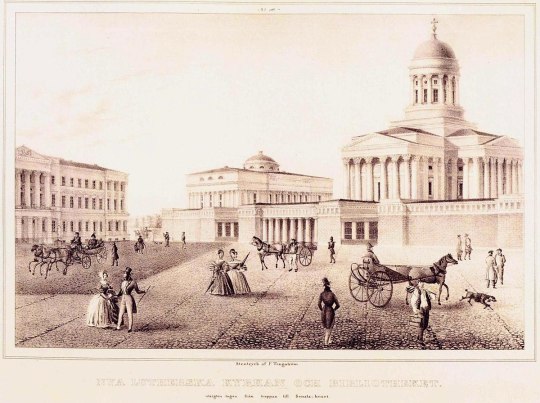
(image source)
#anne lister#ann walker#anne lister code breaker#travelnotes1839#finland1839#russianempire1839#gentleman jack#annelister#annwalker
4 notes
·
View notes
Text

Southern Arrowwood
Richmond, Virginia (USA)
Photo from May 9th, 2020.
Viburnum Dentatum (Southern Arrowood) is a shrub that grows in the eastern half of North America. Very common in riparian woodlands, as it likes moist places. This photo was taken on the bank of a local stream.
15 notes
·
View notes
Text

Viburnum dentatum / Southern Arrowwood at the Sarah P. Duke Gardens at Duke University in Durham, NC
#Viburnum dentatum#Viburnum#Viburnaceae#Southern Arrowwood#Arrowwood viburnum#Roughish Arrowwood#Arrowwood#Native flowers#Native plants#Native shrubs#Flowers#Plants#Shrubs#Plantblr#Nature photography#photographers on tumblr#Sarah P. Duke Gardens#Duke Gardens#Duke University#Durham#Durham NC#North Carolina
9 notes
·
View notes
Photo




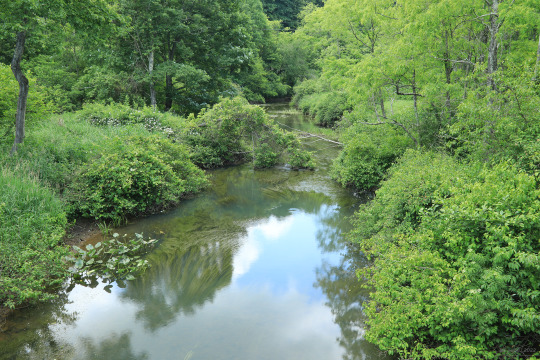


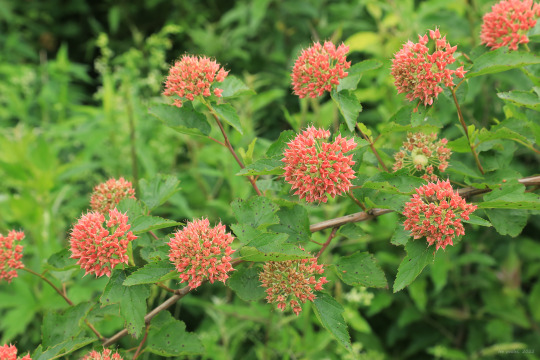

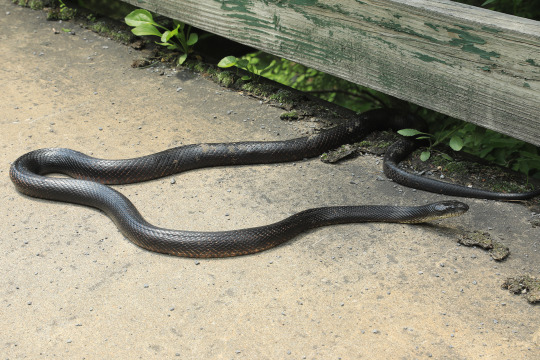
The one thing in life that never disappoints me is an expansive, tumultuous storm sky in late spring and early summer. Add a little wet heat and the crackle of electricity and everything around you suddenly seems charged with boundless energy. Big clouds. Shimmering reflections. Huge energy. Sums up the story of my bike ride on Deckers Creek Tail this past Sunday. Oh, and how about the absolute crush of June wildflowers now in bloom? They seem to grow bigger and bolder by the week. None being more fabulous than the cascading snowballs of my beloved common ninebark (Physocarpus opulifolius), whose exfoliating bark results in its common name. The bees and I were most grateful for the endless procession of blooms along the trail, of course.
From top: Arrowwood viburnum (Viburnum dentatum), so named because Native Americans crafted arrow shafts from the stems of the plant; silky dogwood (Cornus amomum), also known as swamp dogwood due to its affinity for streambanks and wetlands; common ninebark (Physocarpus opulifolius), whose densely-packed clusters of white flowers give way to striking red seed capsules; poke milkweed (Asclepias exaltata); whose white flowers plummet from naked stalks arising at the leaf axils; and four-plus feet of “Go ahead and make my day“ (Pantherophis alleghaniensis) warming up on one of the trail bridges.
#appalachia#vandalia#west virginia#deckers creek#deckers creek trail#bike trail#rails to trails#preston county#spring#flora#wildflowers#storm clouds#viburnum dentatum#arrowwood#cornus amomum#silky dogwood#swamp dogwood#physocarpus opulifolius#common ninebark#asclepias exaltata#poke milkweed#pantherophis alleghaniensis#eastern ratsnake
38 notes
·
View notes
Photo
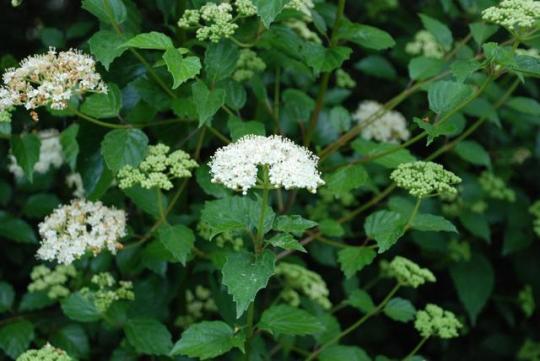
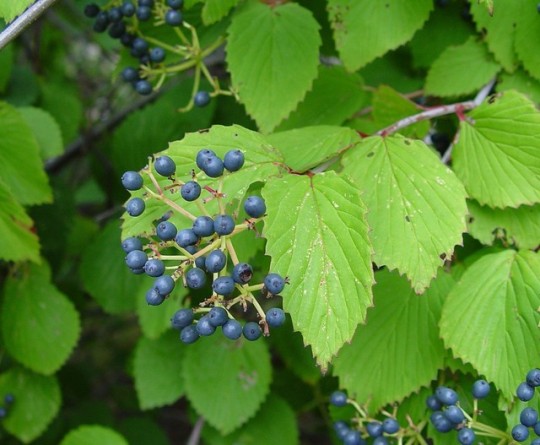
Southern arrowwood, arrowwood viburnum or roughish arrowwood (Viburnum dentatum) is a small shrub, native to the Eastern United States and Canada from Maine south to Northern Florida and Eastern Texas. The fruits are a food source for songbirds. Berries contain 41.3% fat.
7 notes
·
View notes
Photo
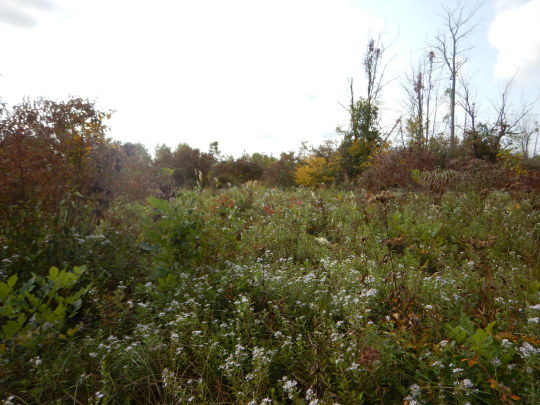

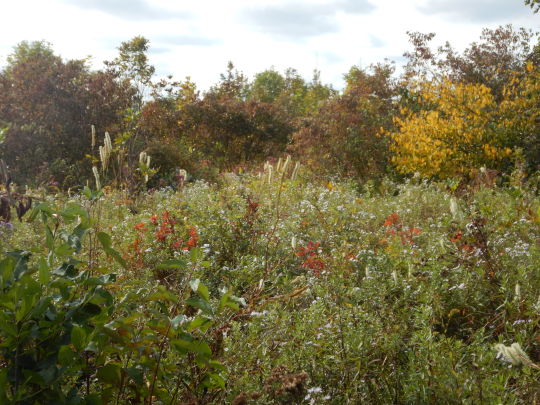

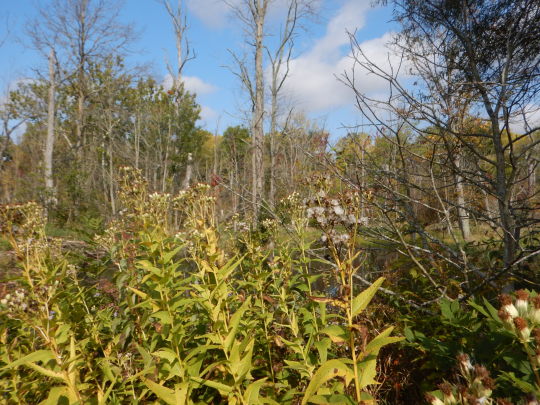
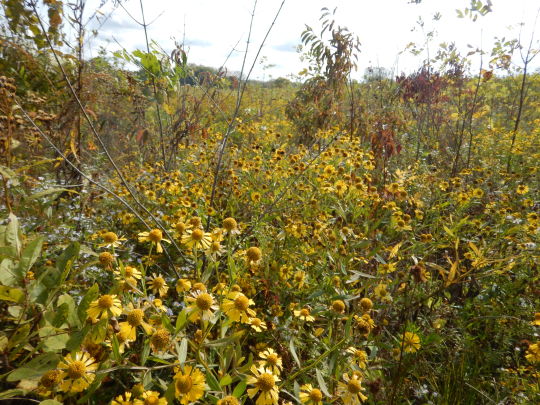

Photographs from one of Ohio’s best remnant wetland complexes
Leadingham Prairie and Fen, Estel Wenrick Wetlands complex and the great Beaver Creek Run, Green and White Ash Swamp complex.
Photograph 1-2: Swale of Symphyotrichum firmum, dead Fraxinus americana can be seen towering in the background surrounded by seed bank recruits along with Yellow leaves of Viburnum dentatum, Red leaves are Cornus amomum. Vernonia gigantea (The Giant Ironweed), Filipendula rubra (Queen of The Prairie), and Eutrochium maculatum (Spotted Joe Pye) are done with their annual phenology and have turned different darker shades of earth tone at this point. Much of the Goldenrods left are that of Ohio and Canada Goldenrod. Still some spires of white from Sanguisorba canadensis are present in the background with a few earthtoned brushes of
3 is much of the same scene, more focus on Sanguisorba canadensis.
4. A swale of forbes showing autumn colors.
5. Mixed Fraxinus americana (White Ash) and Fraxinus pennsylvanica (Green Ash) swamp, dead with some regen in the background of why I was planning to visit this prairie. Here is a small population of a really cool wetland Senecio spp. Senecio suaveolens (AKA false Nabulus)
6. Helenium autumnale in a swale community (Autumn Sneezeweed).
7. Right past the population of Senecio suaveolens, is some engineering marvels made by some Castor candensis( Common Beaver.) I can only imagine what the Giant Beaver was capable of making.
#ohio#fens#senecio suaveolens#fraxinus#botany#wild flowers#wildflowers#plants#flowers#kawaii#cottage core#cottagecore#meadow#meadows#meadowcore#autumn#fall#helenium#sanguisorba#vernonia#eutrochium#symphyotrichum#solidago#filipendula#cornus#vibernum#senecio#nabulus#cute#naturecore
73 notes
·
View notes
Photo

Viburnum leaf beetles are hatched and beginning to feed in Chicagoland. Go check your V. dentatum especially and bring a hand lens. See that little green larvae with a dark head? #viburnumleafbeetle #viburnumpests #getthemnow https://www.instagram.com/p/CAIXt4vgZN2/?igshid=hvjinsc9n9c
0 notes